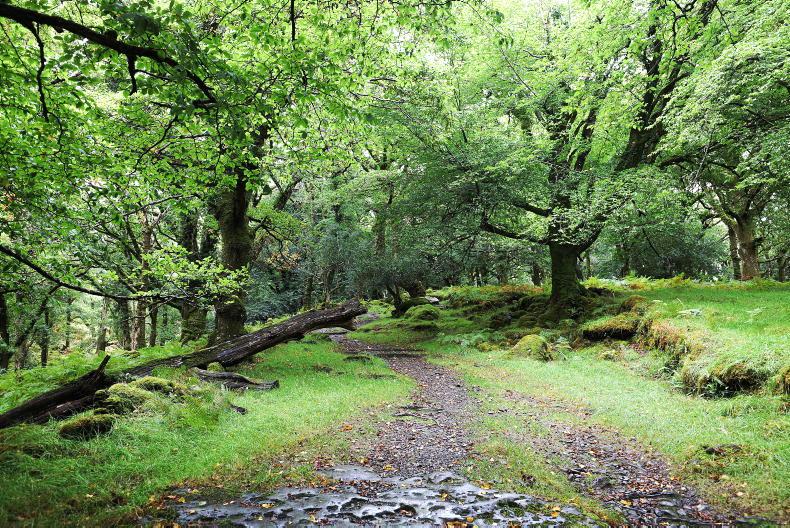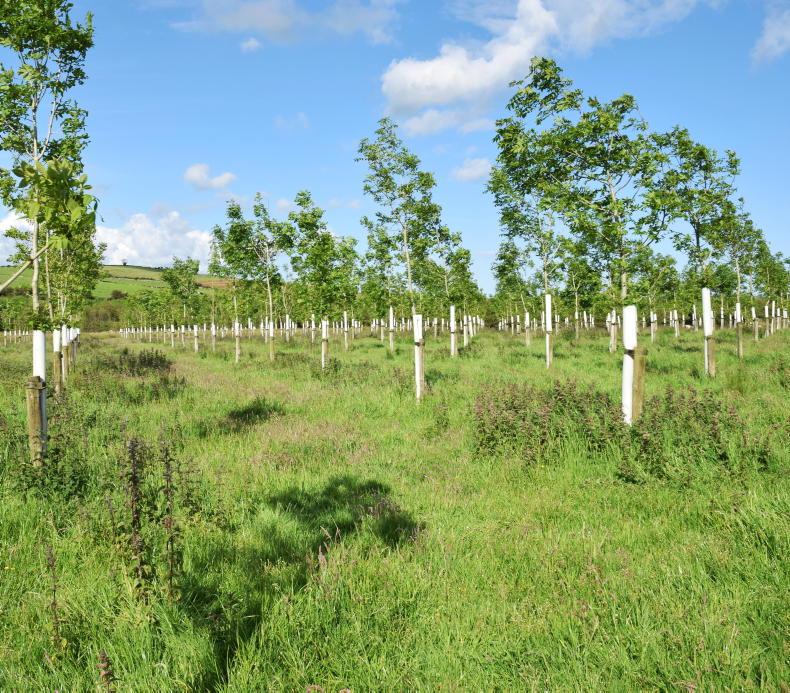Farmers are the future of forestry in Ireland – of that I have no doubt. We are at nothing without placing our farmers and communities at the centre of forest creation.
The good news is that farmers considering forestry have never had more options, choice and rewardthan they do with the new Forestry Programme.
There are 10 different forest types for farmers from native woodland to commercial broadleaves and conifers, continuous cover forests and agroforestry. The premiums have increased substantially for farmers by up to 66%, and are now paid over 20 years.
Also, farmers can claim their entitlements (BISS) and forestry on the same ground, and if you are in the organics scheme you can also plant agroforestry or native woodland and stack three payments on the same land.
For those in ACRES, you can split land parcels and you can move from ACRES to forestry without penalty after two years.
Agroforestry
Agroforestry has struck a chord with some farmers, and the premium for this option has increased to €975/ha for 10 years, the trees are at a wider spacing so you can graze animals, cut silage, or grow crops.
You have your farm income, forest income and organic income. The only caveat is that you are committing to forest land, i.e. not removing the trees after 10 years.
But you can still farm that land, and agroforestry can increase production depending on your farm enterprise.
Your forest has a long-term value as a pension and as a legacy for future generations through inheritance of the family forest.
There is a reason why so many investors are looking to buy into the forestry sector. It is an extremely valuable, not only for wood, but also for the future ‘green economy’ values based around carbon efficiency, biodiversity and water supply.

Marina Conway.
Take, for example, a farmer who decided to sell an acre of land for €8,000. It’s gone forever.
If s/he planted that acre he would have a forest premium income options over 20 years of: €6,000/acre for Sitka, €8,400/acre for oak or €8,900/acre for native woodland. And s/he would still own the land and trees.
Finally, if you are considering forestry, then I cannot emphasise enough that planning is essential.
Land use change in Ireland has gone through a huge evolution in the last few years and not all land will qualify as suitable for forestry.
Farmers are the future of forestry in Ireland – of that I have no doubt. We are at nothing without placing our farmers and communities at the centre of forest creation.
The good news is that farmers considering forestry have never had more options, choice and rewardthan they do with the new Forestry Programme.
There are 10 different forest types for farmers from native woodland to commercial broadleaves and conifers, continuous cover forests and agroforestry. The premiums have increased substantially for farmers by up to 66%, and are now paid over 20 years.
Also, farmers can claim their entitlements (BISS) and forestry on the same ground, and if you are in the organics scheme you can also plant agroforestry or native woodland and stack three payments on the same land.
For those in ACRES, you can split land parcels and you can move from ACRES to forestry without penalty after two years.
Agroforestry
Agroforestry has struck a chord with some farmers, and the premium for this option has increased to €975/ha for 10 years, the trees are at a wider spacing so you can graze animals, cut silage, or grow crops.
You have your farm income, forest income and organic income. The only caveat is that you are committing to forest land, i.e. not removing the trees after 10 years.
But you can still farm that land, and agroforestry can increase production depending on your farm enterprise.
Your forest has a long-term value as a pension and as a legacy for future generations through inheritance of the family forest.
There is a reason why so many investors are looking to buy into the forestry sector. It is an extremely valuable, not only for wood, but also for the future ‘green economy’ values based around carbon efficiency, biodiversity and water supply.

Marina Conway.
Take, for example, a farmer who decided to sell an acre of land for €8,000. It’s gone forever.
If s/he planted that acre he would have a forest premium income options over 20 years of: €6,000/acre for Sitka, €8,400/acre for oak or €8,900/acre for native woodland. And s/he would still own the land and trees.
Finally, if you are considering forestry, then I cannot emphasise enough that planning is essential.
Land use change in Ireland has gone through a huge evolution in the last few years and not all land will qualify as suitable for forestry.










SHARING OPTIONS